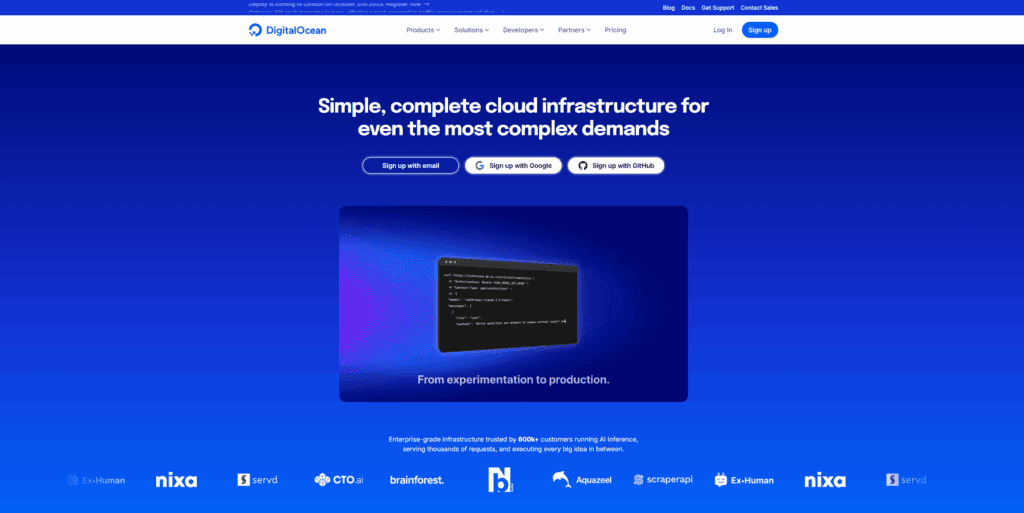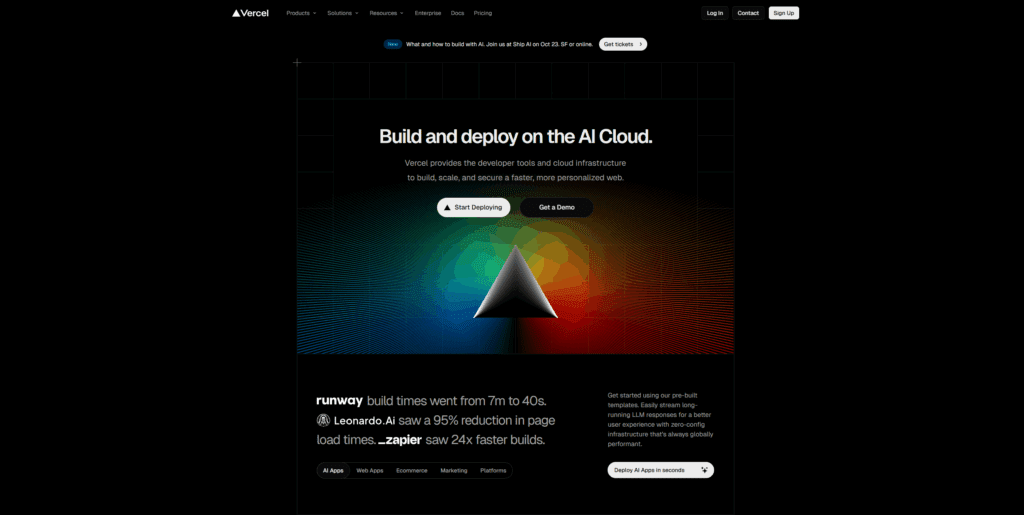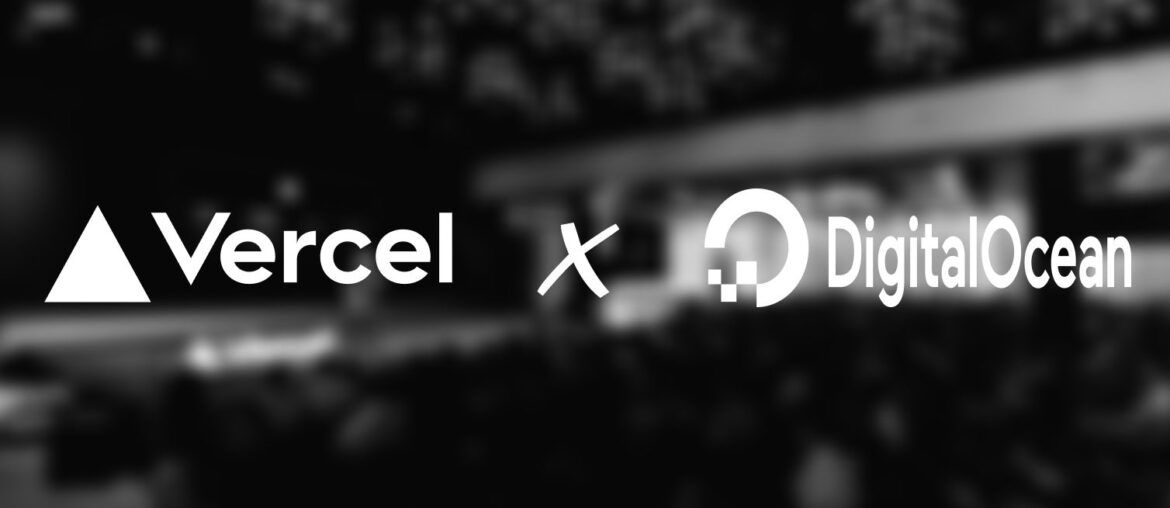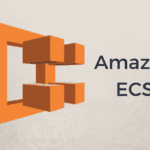When you first heard your team mention “DigitalOcean” or “Vercel,” it may have sounded like generic cloud-provider names. But behind each is a distinct philosophy about how cloud infrastructure should appear to you, the developer — and that difference is only growing more visible in 2025.
DigitalOcean began in 2011 with an explicit mission: make cloud infrastructure simple, accessible, and relatively low-cost for developers. Over the years it expanded into managed databases, object storage, Kubernetes, and (after acquiring Nimbella) serverless functions. Meanwhile, Vercel (originally ZEIT, founded in 2015) started more narrowly as a frontend/deployment platform — optimised for static sites, serverless functions, and frameworks like Next.js. Over time it evolved its infrastructure, acquired tools (Turborepo, Splitbee, Tremor, NuxtLabs) and launched new runtime models (e.g. “Fluid” in 2025) to blur the line between classic servers and serverless.
Why does that matter to you? Because these platforms no longer just host code — they shape how you build, ship, scale, and even think about your app’s architecture. In what follows I’ll walk you through the trade-offs, use cases, costs, and pitfalls you need to know. You’ll walk away able to decide (with confidence) which fits your next project — or if you’ll end up using both.
To compare DigitalOcean and Vercel, it helps to see their current posture and core design choices.
DigitalOcean: cloud infrastructure with PaaS and serverless layers

At its core, DigitalOcean is a cloud infrastructure provider. Think of “Droplets” — virtual private servers you control, with SSH, Linux, networking, etc. Over time, they’ve built managed services:
- Managed databases (PostgreSQL, MySQL, Redis)
- Kubernetes (DOKS)
- Object storage (“Spaces”)
- Block storage
- Serverless functions (via its Nimbella acquisition)
- An “App Platform” layer that offers PaaS style deployment (connect Git, auto builds, scaling)
- GPU hosting/deployments for custom AI & ML models
That layering means you can go low-level (full control) when needed, or adopt more managed abstractions when you prefer convenience.
Vercel: frontend/deployment-first, with evolving backend support

Vercel grew out of the Next.js ecosystem, optimizing for developers shipping frontend (and edge/SSR) apps fast.
Key features include:
- Instant deployments from Git (GitHub, GitLab, Bitbucket)
- Preview URLs for every PR/branch
- Global CDN and automatic SSL
- Serverless and edge functions (run backend logic close to users)
- Recent innovations like the Fluid model (2025) which attempt to bring back some of the concurrency/long-lived behavior of servers in a serverless wrapper
Vercel doesn’t aim to replace full-blown cloud infra — instead, it leans opinionated: you trade some control for speed, conventions, and simplicity.
Let’s unpack how the two compare in practice. I’ll highlight what you, as a developer, should weigh.
Deployment model & workflow
Vercel’s strength is deploy-from-Git simplicity. Push a branch, get a preview link, merge to main, and production auto-updates. It feels polished, almost frictionless.
DigitalOcean’s “App Platform” offers something similar, but it is less mature than Vercel in this space — and for more custom setups you’ll often drop down to Droplets, Docker, or Kubernetes.
If your priority is shipping fast, small teams, frontend-driven apps, Vercel gives more of that “push and forget” experience.
Control versus convention
If you like knowing exactly what’s running — installing custom packages, tuning OS-level parameters, customizing networking — DigitalOcean gives you that freedom. Vercel abstracts away most of that; for many use cases you won’t (and shouldn’t) touch the OS layer.
But that abstraction means you sometimes run into platform constraints (timeout limits, memory limits, cold starts) you can’t fully override.
Performance, global footprint & latency
Because your assets and functions on Vercel are deployed close to users (edge, CDN), you often get lower latency for static content or SSR endpoints. Bejamas’ benchmarks show that Vercel often edges out DigitalOcean App Platform in TTFB and load times across global regions. On many endpoints their serverless performance is comparable.
However, because DigitalOcean gives you the ability to pick data center regions, control caching, and optimize custom infrastructure, in some scenarios you can squeeze out even better performance — especially for backend-heavy workloads.
Scalability & flexibility
With DigitalOcean, you scale by resizing VMs, adding nodes, autoscaling, or distributing workloads across services you control. You’re responsible (or semi-responsible) for that.
Vercel handles much scaling for you automatically (for the supported execution models). But it only helps within the constraints of its serverless / edge model. If your app performs heavy sustained compute or background jobs, you may hit limitations.
Pricing & cost models
This is where things get subtle. Vercel’s “free” and lower tiers look generous, but many users hit fair-use limits (bandwidth, build minutes) unexpectedly. Zell Liew, in a blog comparison, shared that Vercel’s hidden 100 GB bandwidth cap (in free tier) caught him off guard. Meanwhile, DigitalOcean’s pricing is more “you’re buying a virtual machine with known specs,” so your billing is more predictable (though you pay for everything you run).
| Category | DigitalOcean | Notes | Vercel | Notes |
|---|---|---|---|---|
| Entry plan / base fee | App Platform Free: $0/mo; Paid: from $5/mo | Free: up to 3 static-site apps; Paid adds containers and autoscaling choices. | Hobby: $0/mo; Pro: $20 per user/mo | Pro includes usage credits and higher included quotas. |
| Compute: containers / app instances | App Platform container instances from $5/mo (shared 1 vCPU/512 MiB, 50 GiB transfer) up to dedicated sizes (e.g., 1 vCPU/512 MiB with autoscaling, $29/mo, 100 GiB transfer) | Transfer allowance scales with instance size; autoscaling on dedicated only. | Serverless/Edge included with plan; no fixed monthly per-instance price | You pay by requests, data transfer, and function resources (below). |
| Compute: VMs | Droplets from $4/mo; bandwidth starts 500 GiB/mo per droplet pool; overage $0.01/GiB | Backups: weekly 20% or daily 30% of droplet price. | n/a | Vercel doesn’t sell raw VMs. |
| Bandwidth / CDN egress | App Platform: included per instance (see above); overage $0.02/GiB. Droplets: $0.01/GiB overage; Spaces: $0.01/GiB overage | Inbound free. Transfer pools per product (App Platform vs Droplets vs Spaces are separate). | Fast Data Transfer: Hobby 100 GB incl.; Pro 1 TB incl.; overage from $0.15/GB | Regional pricing may vary slightly. |
| Serverless functions — execution | Free 90,000 GiB-s/mo (≈25 GiB-h); overage $0.0000185/GiB-s ($0.07/GiB-h) | Billed on memory×duration; 100 ms min per invoke. | Active CPU: 4 h/mo incl.; overage from $0.128/h. Provisioned memory: 360 GB-h/mo incl.; overage from $0.0106/GB-h | Plus per-invocation pricing below. |
| Serverless functions — invocations | Included in execution model above (no separate per-invoke fee) | Pricing driven by GiB-seconds. | 1 M invokes/mo incl.; overage from $0.60 per 1 M | Applies to Node/Edge/“Fluid” per docs; check project metrics. |
| Edge requests (Vercel CDN & middleware) | n/a | — | Hobby 1 M/mo incl.; Pro 10 M/mo incl.; overage $2 per 1 M | Quota separate from function invocations. |
| Image Optimization | Use Spaces/CDN or your app; priced per storage/egress above | No managed image transform SKU; roll your own or 3rd-party. | Transforms: 5k incl.; $0.05 per 1k over. Cache reads: 300k incl.; $0.40 per 1M. Cache writes: 100k incl.; $4 per 1M | Counts separately from Fast Data Transfer. |
| Incremental Static Regeneration (ISR) | n/a | — | Reads: 1 M incl.; then $0.40 per 1 M. Writes: 200k incl.; then $4 per 1 M | Applies when revalidating pages. |
| Blob / object storage | Spaces: $5/mo includes 250 GiB storage; extra $0.02/GiB-mo; egress billed separately | Built-in CDN available. | Vercel Blob: 1 GB storage incl.; $0.023/GB-mo over; data transfer 10 GB incl.; overage from $0.05/GB | Ops priced per 1k/1M operations. |
| Managed databases | Single-node from $15/mo; dev DB in App Platform $7/mo (512 MiB) | Traffic to/from managed DBs doesn’t count against bandwidth allowance. | n/a | Use external DBs or partners; not a native Vercel SKU. |
| Build execution / CI minutes | Included in App Platform build; no public per-minute SKU | Container builds priced within instance; bandwidth overages separate. | Hobby: build minutes included per docs; Pro: higher included minutes; on-demand & concurrency priced separately | Latest page shows Pro includes up to 200 h build execution in trial credits; concurrency add-ons discounted in 2025. |
| Dedicated egress IP | $25/mo per app (App Platform) | Useful for IP allow-lists; HA pair under the hood. | ||
| Backups & snapshots (VMs) | Weekly backups 20% of droplet cost; daily 30%. Snapshots $0.06/GB-mo | Applies to Droplets. | ||
| Support & SLAs (quick gist) | Droplets SLA 99.99%; bandwidth pooled per product; transparent overages | See docs per product. | Plan-based; Pro includes credits/quotas; Enterprise negotiable | See pricing & docs pages. |
Ecosystem, integrations & services
DigitalOcean offers more diverse infrastructure services: managed databases, Kubernetes, block & object storage, networking tools. If your app needs a relational DB, caching, custom background jobs, or specialized infrastructure, DO gives you building blocks.
Vercel focuses mostly on frontend + edge + serverless integrations. But obviously it links nicely into many frameworks (Next.js, SvelteKit, etc.), and is building up its ecosystem (e.g. through acquisitions).
Support & service levels
One of the clearest distinctions is how each company treats support and customer access. In practice, this affects how quickly you can get help when something breaks—or when you’re debugging tricky performance issues.
DigitalOcean generally offers a more “level-playing-field” approach. Their support tiers are tied to how much you pay and which products you use, but you’ll find that even lower tiers get access to ticketed support channels and fairly detailed documentation. They don’t tend to bury basic usage support behind very high paywalls. Because you often manage more of the stack (OS, networking, etc.), their support is accustomed to troubleshooting at that granular level.
Vercel, by contrast, has a more layered support model. The free (Hobby) tier offers minimal or community support, and many issues prompt you to upgrade. For Pro and Enterprise customers, you get better response times, more dedicated attention, and in the Enterprise case, a more formal SLA, account management, and custom infrastructure support. Because Vercel hides much of the infrastructure, many debugging issues (cold starts, function timeouts, limits) are opaque — you must rely on their tooling or logs, and sometimes in “black box” territory. That can make diagnosing certain performance problems slower and more frustrating.
For big production systems, having reliable, predictable support matters. If your site goes down, you don’t want to be stuck waiting for a reply because your tier is too low.
Billing, transparency & usage visibility
Support isn’t the only place surprises hide — billing surprises are far more common, and that’s where transparency and predictability become crucial.
DigitalOcean’s approach
- Monthly billing with accrual: DigitalOcean accumulates your usage over a calendar month and charges at the start of the next billing cycle.
- Billing alerts: You can set thresholds to be notified when your usage approaches a certain dollar amount.
- Per-bucket bandwidth billing for Spaces: Recently they introduced per-bucket breakdowns so you can see exactly how much bandwidth each of your object storage buckets is costing you (origin vs CDN, daily, etc.). That gives you much more insight into where your overages might come from.
- No refunds, no prepaying for support: Their billing docs explicitly state you cannot get refunds and you cannot prepay for support plans.
- Transparent transparency reports: DigitalOcean publishes semiannual transparency reports — e.g. how many government data requests they receive. This is more about trust/security than support, but it signals a willingness to disclose.
Because DigitalOcean exposes many of the underlying resources to you (droplets, volumes, networking), you tend to have more direct control over cost levers (e.g. turning off a VM, resizing, cutting traffic). That tends to keep surprises lower if you actively monitor.
Vercel’s approach
- Usage limits + automatic overages: In Pro or Enterprise, once you exceed an included quota (for bandwidth, function invocations, etc.), Vercel allows “on-demand usage” so your deployments don’t break, but you’re charged at overage rates.
- Notifications & spend management: Vercel tries to alert you via dashboard/email when you approach limits, and you can configure “spend management” behaviors (e.g. pause deployments, trigger hooks) when thresholds are hit.
- Opaque internal limits: Some performance or scaling behaviors are internal to Vercel’s serverless runtime or edge platform, and the metrics available to you might not fully expose every bottleneck (e.g. cold start latencies, function queueing, internal routing). This opacity can make debugging or cost optimization harder.
- Tiered support & SLA perks in Enterprise: The Enterprise tier provides service level agreements, advanced logging, dedicated support, custom resource limits, and more predictable infrastructure behavior.
- Billing FAQs & custom invoicing: For Enterprise users, Vercel provides a more flexible billing structure (invoice, custom contracts) and more detailed documentation in the billing FAQ.
Because Vercel abstracts much of the stack, many of the “cost levers” happen behind the scenes; you don’t always have direct control. That’s a trade-off: less operational burden, but more dependency on Vercel’s internal resource management, and potential surprises if usage spikes.
Support & Transparency: Comparison Table
| Feature / Dimension | DigitalOcean | Vercel |
|---|---|---|
| Support tiers & access | All paying users get access to support; response time increases with plan/product level | Hobby has minimal to no official support; Pro and above get better response, Enterprise gets dedicated/priority support & SLA |
| SLA / uptime guarantees | For droplets & major products, published SLAs (e.g. 99.99%) | SLA mainly available on Enterprise plans |
| Billing model | Monthly accrual, resource-based billing, usage + overage, alerts | Quota + overage model (you’re allowed to exceed limits in many cases), auto on-demand usage |
| Usage visibility & breakdowns | Detailed breakdowns (e.g. per-bucket bandwidth) and alerts | Dashboard usage metrics, quotas, but some internal cost drivers may remain opaque |
| Cost control | You can often manually scale down/stop infra to control costs | More limited manual intervention; must rely on Vercel’s abstractions and thresholds |
| Refunds / prepaid support | No refunds; cannot prepay for support | Custom contracts in Enterprise may allow negotiated terms |
| Transparency & trust | Publishes transparency reports, breakdowns of usage, etc. | More closed system; fewer public disclosures, though Enterprise users have more visibility |
| Support escalation / premium support | Available on higher tiers and for infrastructure products | Enterprise customers get more advanced support (dedicated contacts, custom SLAs) |
Community & adoption
DigitalOcean has long cultivated tutorials, community contributions, forums — a large developer base with infrastructure literacy. Vercel is popular especially among modern JS / frontend developer communities, in part due to its tight coupling with frameworks like Next.js. In terms of web usage, data from W3Techs (in mid-2025) shows ~1.1 % adoption for DigitalOcean vs ~0.8 % for Vercel across measured websites. Those are modest shares, but they show that both have meaningful real-world footprints.
Understanding the trade-offs through examples
Sometimes the best test is through scenarios. Let’s walk some realistic developer use cases:
Scenario A: You’re building a marketing/static site + blog with a bit of dynamic content
You don’t expect heavy backend logic or sustained compute. You want ease above all, fast global delivery, and version previews per branch.
Here, Vercel shines: push to Git, preview links, auto deploy, edge + CDN caching, serverless for a few APIs. Minimal ops.
If you went DigitalOcean for this, you’d likely spin up an App Platform instance (or a small droplet), manage builds, handle caching/CDN setups manually. You trade away speed for control you probably don’t need.
Scenario B: Full-stack app with complex backend, databases, background workers, long‐running processes
You’ll likely want infrastructure control: database tuning, advanced caching, long lived processes or WebSocket servers, queues, etc.
Here DigitalOcean gives you the building blocks. You can host backend, front end, storage, etc., all under your control. You could still deploy frontend parts to Vercel, but you’d want DO for core.
Scenario C: Mid-sized app with growing scale but limited ops team
You want to offload operational burden while still preserving flexibility. You might do a hybrid: host your business logic and data on DigitalOcean (droplets, managed DBs), but deploy front-end / edge functions on Vercel for low-latency global delivery. This is a common compromise: you get the developer experience of Vercel for UI, the control and service diversity from DO for backend.
When one clearly edges out the other
Let me be blunt: there are some cases where one is a clear better fit.
- If your app is purely frontend / static / SSR, with minimal backend, Vercel nearly always gives faster developer velocity.
- If your app involves heavy backend, custom networking, long processes, or you need control over infra, DigitalOcean is almost inevitably the choice.
- If you want to start fast but foresee evolving into a more complex system, plan for a hybrid approach or ensure your platform can adapt.
In practice many teams begin on Vercel, hit limits, and gradually migrate portions to DO or another infra provider. Or they adopt the hybrid model up front.
Pitfalls, gotchas, and things to watch out for
- Cold starts & function limits (Vercel): serverless / edge functions have execution time and memory constraints. If you miscalculate, you can get throttled or errors.
- Costs creep (Vercel): free tiers look generous but “fair use” clauses and bandwidth/build-minute limits bite.
- Opaque bottlenecks: some performance issues (especially in serverless layers) are hard to debug.
- Operational overhead (DigitalOcean): you may find yourself spending time on server maintenance, scaling, security patches.
- Cross-platform latency: when mixing services, the network hops between Vercel and DigitalOcean parts can add latency.
- Vendor lock-in tradeoffs: adopting Vercel’s conventions might make migration harder later.
Decision guide: what questions to ask yourself
Here’s a quick checklist (mental) to help you decide:
- What’s the nature of my app?
- Mostly frontend/SSR/static → Vercel is compelling
- Heavy backend / custom infrastructure → lean toward DigitalOcean
- How much operational control do I need?
- If you want to manage everything (OS, network), DO wins
- If you prefer abstraction, Vercel removes much of that burden
- What’s my team/ops capacity?
- Small team or you alone? Vercel gives you breathing room
- Ops specialists on board? DO gives flexibility to use them
- How predictable should cost be?
- DO gives more transparent, resource-based billing
- Vercel gives “build + usage + hidden limits” model; monitor closely
- Do I expect to grow into something complex?
- If yes, decide early if you’ll maintain everything on DO or split
- If no, Vercel may be enough for the full lifespan
- Do certain parts of the stack make sense to separate?
- You could host backend in DO, frontend/edge in Vercel
Answering those leads you to a clearer direction — and if you find yourself in a gray area, you can prototype or hybridize.
Final thoughts
You don’t have to choose one and swear never to use the other. In 2025, many real-world setups are hybrids. But knowing the ethos, trade-offs, and constraints of DigitalOcean and Vercel — as we’ve walked through — gives you a sharper lens when you architect.
If anything I’ve laid out here feels fuzzy or you want help mapping your specific app to one of these, I’d be happy to help — just tell me your stack in the comments below, scale expectations, or budget and we’ll pick together.










